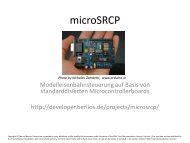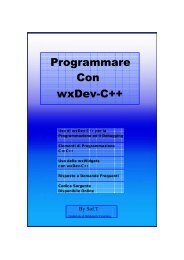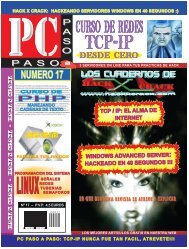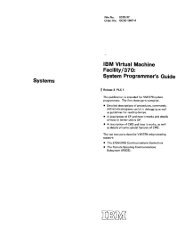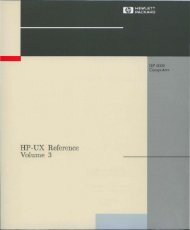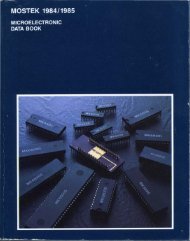Demonstration of an Aerodynamic Design Process for ...
Demonstration of an Aerodynamic Design Process for ...
Demonstration of an Aerodynamic Design Process for ...
You also want an ePaper? Increase the reach of your titles
YUMPU automatically turns print PDFs into web optimized ePapers that Google loves.
The presented aerodynamic design process <strong>for</strong> turbomachines<br />
<strong>for</strong> compressible fluids is mainly developed <strong>an</strong>d used by<br />
students. Especially <strong>for</strong> educational purposes, open source s<strong>of</strong>tware<br />
seems to be <strong>an</strong> appropriate choice. There<strong>for</strong>e, this approach<br />
is widely used in student projects at the Institute <strong>for</strong> Flight<br />
Propulsion. This paper describes the capabilities <strong>an</strong>d the physical<br />
background <strong>of</strong> the s<strong>of</strong>tware.<br />
Utilizing open source s<strong>of</strong>tware, one benefits from the knowhow<br />
<strong>of</strong> others, which has already been implemented in a well<br />
documented way. The GNU General Public License declares the<br />
execution, m<strong>an</strong>ipulation, copying <strong>an</strong>d redistribution <strong>of</strong> the s<strong>of</strong>tware.<br />
These aspects have to be clarified in adv<strong>an</strong>ce in a multiuser<br />
development, as every student has the copyright on his own code.<br />
This paper is org<strong>an</strong>ized <strong>an</strong>alogously to the presented design<br />
process as shown in Fig. 1. The demonstration <strong>of</strong> the design process<br />
is introduced by the creation <strong>of</strong> a geometry with the Blade-<br />
<strong>Design</strong>er. Subsequently the <strong>an</strong>alysis <strong>of</strong> the blade geometry is<br />
described. The used solvers are OpenOffice, Mittel the me<strong>an</strong> line<br />
program, streamline curvature method (SCM) <strong>an</strong>d OpenFOAM.<br />
In a final step the postprocessing is depicted via ParaView <strong>an</strong>d<br />
TurboVTK. The application is demonstrated on a generic single<br />
stage axial compressor.<br />
Figure 1. DEMONSTRATED DESIGN PROCESS<br />
SOFTWARE LIBRARIES AND LANGUAGES<br />
The tools which were developed are either implemented in<br />
C++ or python under a modern GNU/Linux operating system.<br />
Hence some additional s<strong>of</strong>tware libraries are required.<br />
For the purpose <strong>of</strong> h<strong>an</strong>dling non uni<strong>for</strong>m rational basis<br />
spline (NURBS) curves <strong>an</strong>d surfaces, the NURBS++ s<strong>of</strong>tware<br />
library [1] is applied in C++. Python is a high level scripting l<strong>an</strong>guage<br />
with a large number <strong>of</strong> additional libraries, which is very<br />
easy to learn <strong>for</strong> beginning programmers. There is no python<br />
library available <strong>for</strong> h<strong>an</strong>dling NURBS curves <strong>an</strong>d surfaces with<br />
the functional r<strong>an</strong>ge <strong>of</strong> the NURBS++ library. On account <strong>of</strong> this,<br />
python bindings <strong>for</strong> the NURBS++ library have been created by<br />
Blaim <strong>an</strong>d Walter [2].<br />
CFD General Notation System (CGNS) is a widley used file<br />
<strong>for</strong>mat to store results from CFD simulations. In order to read<br />
<strong>an</strong>d write CGNS files with python <strong>an</strong> appropriate interface to the<br />
CGNS library is required. As the old pyCGNS python bindings<br />
are only working up to CGNS version 2.3, a set <strong>of</strong> new python<br />
bindings <strong>for</strong> CGNS input <strong>an</strong>d output in python has also been implemented<br />
by Walter [3].<br />
BLADE DESIGNER<br />
For the design <strong>of</strong> the turbomachine blade geometry the parametric<br />
CAD tool Blade<strong>Design</strong>er [4] has been developed by Balassa,<br />
Barthmes [5], Fellerh<strong>of</strong>f [6], Kührm<strong>an</strong>n [7] <strong>an</strong>d Walter.<br />
This tool generates a three-dimensional NURBS model from<br />
basic pr<strong>of</strong>ile parameters <strong>an</strong>d blade describing parameters. It<br />
supports multistage geometries <strong>an</strong>d provides output in IGES,<br />
VRML, blockMeshDict <strong>an</strong>d XML <strong>for</strong>mat as well as direct access<br />
to discrete points or NURBS curves <strong>an</strong>d surfaces. The project<br />
is based on a preceding work <strong>of</strong> Mögele [8] who investigated<br />
the blade modelling possibilities with NURBS surfaces. Furthermore<br />
a graphical user interface (GUI) was implemented by<br />
Walter in PyQt4, which is shown in Fig. 2.<br />
Figure 2. BLADEDESIGNER GUI<br />
2 Copyright © 2010 by ASME


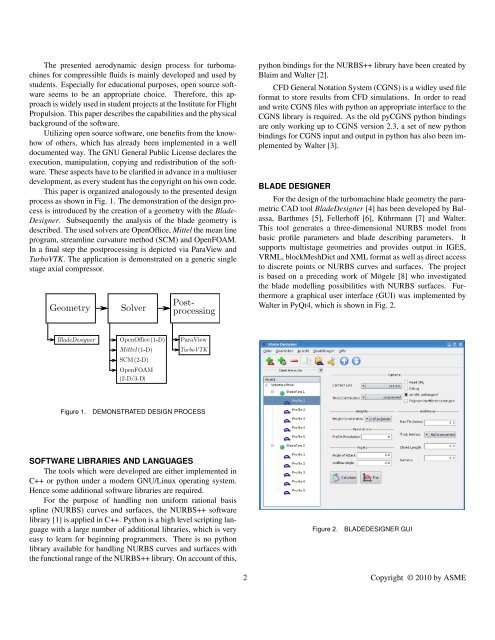
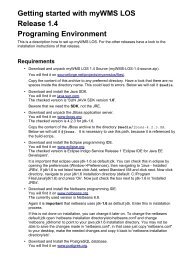
![04. The Da Vinci Code - Dan Brown(2003)[dobd.tk].pdf](https://img.yumpu.com/17290229/1/190x245/04-the-da-vinci-code-dan-brown2003dobdtkpdf.jpg?quality=85)
